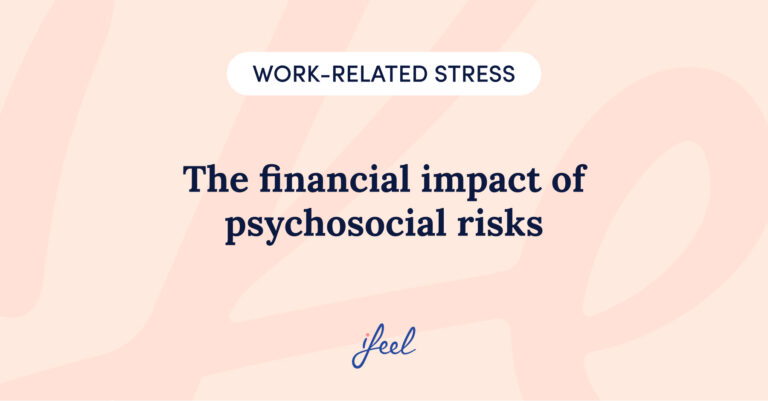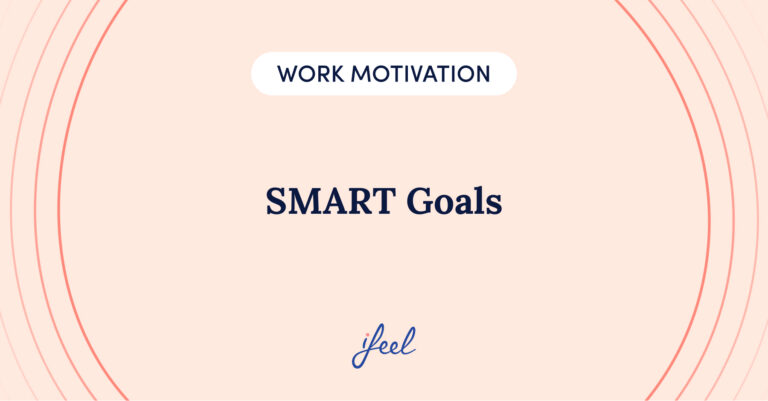How can we improve employee well-being and prioritize it? Employee well-being, understood broadly, is a term that can be assimilated into occupational health and can only be considered thoroughly, i.e., in terms of the absence of discomfort, but also in a positive way, as something beyond what workers possess.
This means that it is essential to protect the employee’s well-being at the physical level, preventing threats to their physical health and integrity that may be associated with work. It also includes, of course, the protection of their psychological well-being, which, as just mentioned, goes far beyond the absence of severe health problems that may result, for example, in sick leave due to stress or depression. In this post, we will discuss how to improve employee well-being to enhance the success of any organization.

How to improve employee well-being, and what does it entail?
Indeed, employee well-being in the workplace can only be understood holistically, both physically and psychologically. It is, therefore, a complex element of life in the company. For this reason, we will highlight some fundamental aspects when explaining employee well-being as the axis of their life inside and outside the company.
1. Salary and other benefits
Good material and economic conditions are crucial to improving employee well-being. However, it is also a widely shared experience that this well-being is not assured just because the economic conditions are ideal. In other words, there comes a time when a further increase in salary does not improve employee well-being. To favor it, instead, it is necessary to complement the economic part with the so-called emotional salary, as well as with a strategy of social benefits suitably adapted to the characteristics of the employees.
2. Job satisfaction
Unfortunately, not everyone always has the opportunity to work in a company whose mission is in line with their values, in a position appropriate to their level of training, or actively participate in a motivating project that challenges their skills and provides them with significant learning.
However, it is essential to take these and other elements into account because they are the ones that, progressively and realistically, will provide employees with a satisfactory experience that will strengthen their commitment to the company and their sense of belonging.
3. Feeling of fulfillment
When discussing such an important topic as how to improve employee well-being, it is widespread to refer to the concept of employee happiness. This purely philosophical term is undoubtedly enormously important as a characteristic of any human life.
However, it is doubtful that a company should be responsible for achieving it for its employees. Instead, it is much more appropriate to explore what factors facilitate employees experiencing a sufficient sense of professional fulfillment and the causes that keep them away from it.
4. Possibility of further learning
One aspect that provides greater job satisfaction and, therefore, better contributes to the employee’s well-being within the company is the possibility of professional development.
This development is achieved by taking on increasing and more diverse responsibilities and, of course, by having access to training and learning opportunities that enhance the employee’s experience and allow them to appreciate the opportunity they have to perform at the operational level within a particular company.
5. Work flexibility
As mentioned above, the employee’s well-being depends not only on the economic conditions of their job but also on their ability to organize the tasks they have to perform flexibly and in a way that is suited to their particular needs. This aspect especially involves the timetable, both in terms of the number of hours worked in a given period and in terms of their daily distribution.
6. Ability to balance work and family life
Family life, or all those aspects and activities outside the work environment, require all our energy, involvement, and commitment. To achieve this, our working conditions must allow for a coherent and sufficient harmony between the different aspects of our life.
When this happens, people perceive that their different occupations or responsibilities do not invade or interfere with each other, which inherently favors the employee’s well-being.
Employee well-being in on-site and office jobs
One of the most significant consequences of the pandemic in the workplace is the increase in the implementation of remote work or, at least, hybrid models between remote and on-site work.
However, although, at first, it may have seemed that remote work would become the prevailing model in the work ecosystem, on-site work has not disappeared. Still, it is gaining ground again in many sectors as the pandemic is curbed.
For this reason, and more than ever, it is necessary to rethink the most effective measures to protect employees’ well-being when working face-to-face.
1. Healthy office habits
Taking care of food, tidiness at the desk, good organization of tasks or efficiency in meetings, and teamwork are just some factors that can improve employee well-being at the office.
2. Breaks at work
Of course, this good organization involves taking appropriate breaks, in terms of duration, quantity, and content, during the working day. It is also important to pay attention to aspects such as digital disconnection or the actual use of vacation days to take care of the well-being of staff members.
3. Friendship and peer relationships
One of the aspects that best foster the psychological well-being of people is the quality of relationships. It is also essential to consider this in the work environment, encouraging team cohesion, friendship at work as much as possible and the construction of a collaborative environment among all.
Remote employee well-being
Of course, employees’ quality of life is not something that should only be monitored when they are in the office. The settings in which remote work takes place must also have minimum conditions not only for the efficient performance of tasks but also for the adequate protection of the employee’s well-being.
How to get organized in remote work
Remote working does not mean that schedules, discipline, or good guidelines for internal communication disappear. It is vital that employees and their managers do not confuse remote work with a multiplication of hours and tasks and do not turn flexibility into mere disorder.
To monitor these aspects, it is crucial, especially at the beginning, to provide adequate support to the workforce to ensure that employees have the necessary means to work remotely. In this context, they should be advised of guidelines for creating remote workspaces appropriate to their circumstances, regardless of the space from which they perform their functions.
How to maintain the company’s philosophy when working from home
Mass remote work within a company can be a challenge and an opportunity to expand into different areas and practice new work methodologies that facilitate adaptation to a highly changing work environment. So that employees can continue to experience the corporate culture while working remotely, and so can those employees who work in distributed teams, HR managers must receive advice adapted to the company’s specific reality to enable it to grow without distorting it.
Smart working (not only in pandemics)
In addition to working remotely to protect our physical health or to facilitate the reconciliation between work and the other facets of our lives, we must do it efficiently and, above all, smartly.
To achieve this, it is essential to perfect an innovative working methodology thanks to the good use of technology so that the absence of presence in the office generates absolute autonomy of employees and improves their performance, whether we are in a pandemic or not.
How to avoid deterioration of employee well-being?
Employee well-being is not a permanent situation that is attained so that we can deal with other matters later. On the contrary, it must be fostered and maintained with a daily commitment on the part of each employee and on behalf of those responsible for Human Resources in each company.
To improve employee well-being, they must have the right tools to identify potential psychosocial risk factors associated with work, take concrete steps to prevent their impact, and enlist the help of experts in psychological well-being in the workplace to address those issues that are not preventable.
Some examples of these resources are the guides for human resources managers, assessing the work environment, or improving the employee experience, such as the ones we have at ifeel.
What to do when employee well-being has been overlooked?
The best economic efficiency and health strategy is to prevent potential psychosocial risk factors that may threaten employee well-being.
Unfortunately, not all risks to which employees’ health is subjected are preventable, and companies do not always have the best tools to minimize such damage.
For this reason, organizations need to have highly professionalized tools to address the causes affecting employee well-being at any time, to avoid further damage to the company and the individual.
In this context, the possibility of having an emotional well-being program for companies such as the one offered by ifeel to its employees can make a massive difference in the corporate strategy of human capital care.
Thanks to this program, all company employees can benefit from different levels of care for their psychological well-being, including an online therapy service with a team of psychologists specialized in cases like theirs.
In addition, human resources managers can receive personalized, data-driven advice to help them in their efforts to care for their team members.

What role does Human Resources play?
The traditional view of HR managers is that they are the people in charge of conducting recruitment interviews and managing vacation, leave, schedules, and other issues that may arise within the workforce.
Indeed, these functions are usually included within the HR department. Still, it should be noted that this is only a part of it since the human resources area involves many more responsibilities, including enhancing the welfare of employees through different strategies.
Strategy for HR managers to improve employee well-being
Employees’ circumstances are not static but evolve. It is also important to remember that not all team members openly express what is happening to them or what they need. It is not appropriate to assume that there are no complaints or requests, implying that everyone has a positive employee experience.
For this reason, those responsible for taking care of an organization’s human capital must have tools at their disposal that facilitate their communication with the workforce and knowledge of their particular reality. One of these tools can be the downloadable strategy for HR managers developed by ifeel’s team of experts.
HR KPIs
Human Resources is generally not the first area we consider when discussing key performance indicators. However, it is still interesting to propose KPIs that enable people managers to carry out their functions with greater efficiency.
Organizations today must access HR KPIs that provide helpful information to analyze the specific reality that current and future team members are experiencing at a given time.
Tools for measuring employee well-being
As we have indicated throughout this article, the most efficient way to improve employee well-being is to follow a consistent and well-assessed strategy, executing data-driven decisions based on our inquiries about the workforce situation.
Work environment surveys
For the proper development of employee well-being, companies must be aware of the influence of the company’s work environment on staff members and their way of organizing and working. They must therefore be able to define it, detect its characteristics and identify those aspects that may negatively affect people’s quality of life.
In this sense, and as with other aspects of corporate life, companies must have tools that allow them to take their pulse, that is, to assess the work environment in which their employees live every day.
Employee experience
Those organizations that have a genuine interest in building a successful employee experience from the outset must have the ability to approach their future and current employees, understand their needs and characteristics, and adapt their methodology, processes, and benefits policy to those circumstances as much as possible.
Only in this way can you hit the bull’s eye when providing employees with a pleasant journey at the company, which will impact their psychological well-being and the company’s internal and external reputation. If you don’t know where to start structuring your employee experience improvement strategy, ifeel can help you.
Tools for measuring team stress
One of the main psychosocial risk factors at work and, therefore, a significant threat to employee performance and well-being is excessive work stress.
Advantages of a corporate wellness program
At ifeel, we want to help companies build a healthy corporate culture that promotes the well-being of all its members. To achieve this, our team of psychologists specializing in workplace wellness has created an emotional well-being program for companies.
As you can imagine, a corporate wellness program is essential for the company’s progress and a good decision regarding its ROI. Through this collaboration, human resources managers can receive personalized, data-driven advice on how to detect, for example, possible dysfunctionalities in relationships within their teams, as well as their causes and how to address them so that they do not seriously damage the work environment. In addition, this program offers employees a comprehensive mental health care service structured at different levels according to their needs. Try our program now so you can see all its advantages.
We suggest you visit our Resources section. There you will find a variety of content on how to function healthier individually and as a team. There are different contents in podcast format, Guides for Human Resources on various topics that affect emotional well-being in the workplace or Interviews with top HR managers. In addition, we have a Psychosocial Risk Factors Template and use it to comply with the requirements of the Labor Inspection.
We hope this post on how to improve employee well-being has been interesting. If you want more information about our emotional well-being program for companies, simply request it, and we will contact your team as soon as possible.







